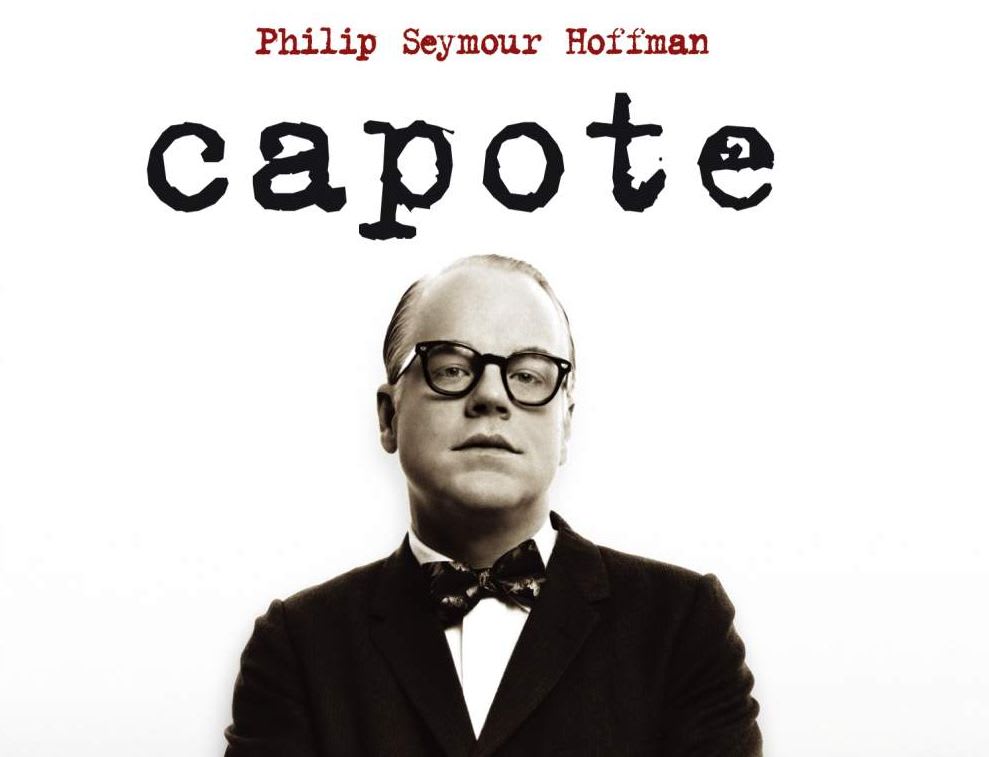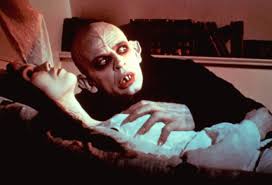
CAPOTE. (2005) DIRECTED BY BENNETT MILLER.
BASED ON GERALD CLARKE’S 1988 BIOGRAPHY ‘CAPOTE.’
STARRING PHILIP SEYMOUR HOFFMAN, CATHERINE KEENER, BOB BALABAN, BRUCE GREENWOOD, CHRIS COOPER, AMY RYAN, MARK PELLEGRINO AND CLIFTON COLLINS JR.
REVIEW BY SANDRA HARRIS. ©
I was barely breathing through most of this biopic, I was so engaged. The late Philip Seymour Hoffman does a magnificent, Oscar-winning job of playing Truman Capote (1924-1964), one of America’s most famous writers, if not the famousest, lol.
Openly gay, ridiculously intelligent, an entertaining raconteur and something of a social butterfly, he’s right up there with Salinger, Hemingway and Maugham for the brilliance of his writing, but he outstrips them a little, maybe, in terms of notoriety.
When we meet him IN 1959, he’s already famous for having written the novella, BREAKFAST AT TIFFANY’S, which will be made into an outstandingly memorable film starring Audrey Hepburn in 1961.
In 1959, something happens in a lonely area of Kansas which pretty much changes the course of his life and determines how he will forever be remembered by the reading public.
Two robbers break into an isolated home and murder the four occupants, a husband and wife and two children known as the Clutter family, while searching for money. The robbery only yields a paltry forty or fifty dollars, and for this sum four people died and the two men are sentenced to death by hanging. It’s a gruesome story.
Truman reads a little three-hundred-word article in the newspaper and is instantly captivated by it. He tells his editor at the New Yorker magazine that he’s going to write a book about it, a true crime book he calls his ‘non-fiction novel.’ The book will be a bazillion seller, but not before Truman does his research…
He enlists the help of his childhood friend, Nelle Harper Lee of TO KILL A MOCKINGBIRD fame, to help him to befriend the officer in charge of the case and his wife. The Truman charm offensive, backed up by Nelle, is impossible to withstand.
Truman gains access to the crime scene photos and he even attends at the funeral home and views the bodies, their heads eerily swathed in cotton bandages, mummy-style, because they’ve been shot in the head with a shotgun. Should those coffins have been left open and unattended for every passing rubbernecker to have a nose at them…?
He also befriends the young schoolgirl who found the bodies and is so nice to her she lets him have her diary, with details of the fateful day in it.
The main thing he does, of course, is that he meets and befriends the two robber-killers, Perry Smith and Richard ‘Dick’ Hickock, in prison and finally on Death Row. He helps them find a decent lawyer to keep them alive, by virtue of the appeals process (Ted Bundy lived an extra decade or so thanks to this process), so that they stay alive long enough for him to get all the details out of them he needs for his book.
He allows the two men, Perry Smith in particular, to become attached to and also dependent on him, viewing him not only as a friend but also as a kind of saviour figure.
Apart from a possible sexual interest in Perry Smith, a good-looking and surprisingly intelligent man, Truman’s main interest in them is as fodder for his book, the book that will take years to write and will become the great big obsession of the author’s life. The book is the thing, not the men. How do we feel about this morally…?
Then, when the great writer finally feels he has enough material for his story, he withdraws his legal aid from the two men and essentially sits back and waits for them to die on the gallows so that he can write the story’s end.
The many stays of execution cause him untold stress, as he tries to explain to a disgusted Harper Lee on the night of the film premier of her famous book TO KILL A MOCKINGBIRD in 1962. (How does he think the killers feel about it, or does he think about them at all?)
He’s jeopardised his friendship with her because of his morally suspect stance on the book-vs-killers question, and he’s alienated his lover, fellow writer Jack Dunphy, too, because of all the time he’s spent on his true crime book.
I love Bob Balaban as New Yorker editor William Shawn, and also the way the director has of picturing the lonely murder house from far away so that it sits neatly on the horizon.
The murder house itself makes me think of another grisly story from true crime America, the Axe Murders of Villisca, in which a family is butchered in 1912 by an assailant who is already secreted in the house when the family close up for the night.
This is such a good film and a positive masterclass in acting from its deceased lead. Poor PSH, dead from drugs aged only forty-six, his death somewhat mirroring Capote’s own from liver disease and drugs at the age of only sixty. (Sixty’s not old!) They both died, at least in part, from ‘multiple drug intoxication.’ Isn’t that strange? Art mirroring life and vice versa.
Truman never finished another novel after the book about the killings he called IN COLD BLOOD. I have it somewhere and I intend to dig it out and read it and see if it was worth the moral crimes you may feel he committed to get the full story out of Smith and Hickock.
Legally, he’s done nothing wrong, but has he done the absolute right thing towards the two condemned men? Does, or should, one’s art come before all else? Even before our obligations to our fellow man? I guess we’ll all have to make up our own minds on that particular question…
